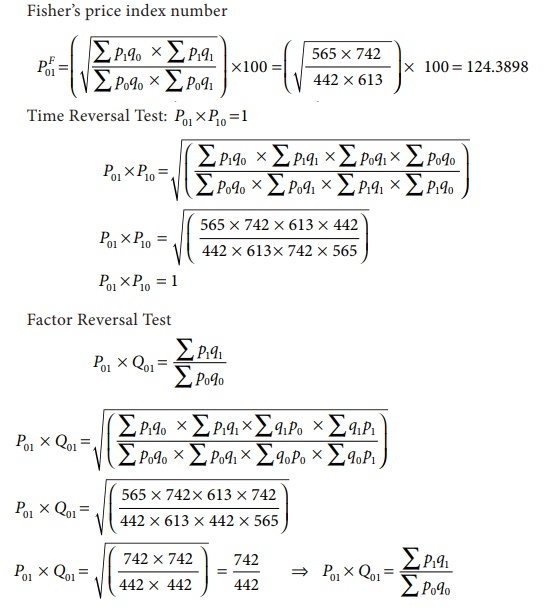Definition, Solved Example Problems | Applied Statistics - Test of adequacy for an Index Number | 12th Business Maths and Statistics : Chapter 9 : Applied Statistics
Chapter: 12th Business Maths and Statistics : Chapter 9 : Applied Statistics
Test of adequacy for an Index Number
Test
of adequacy for an Index Number
Index numbers are
studied to know the relative changes in price and quantity for any two years
compared. There are two tests which are used to test the adequacy for an index
number. The two tests are as follows,
(i) Time Reversal Test
(ii) Factor Reversal
Test
The criterion for a good
index number is to satisfy the above two tests.
Time Reversal Test
It is an important test
for testing the consistency of a good index number. This test maintains time
consistency by working both forward and backward with respect to time (here
time refers to base year and current year). Symbolically the following
relationship should be satisfied, P01 × P10 =1
Fisher’s index number
formula satisfies the above relationship

when the base year and current year
are interchanged, we get

Factor Reversal Test
This is another test for
testing the consistency of a good index number. The product of price index
number and quantity index number from the base year to the current year should
be equal to the true value ratio. That is, the ratio between the total value of
current period and total value of the base period is known as true value ratio.
Factor Reversal Test is given by,

Example
9.12
Calculate Fisher’s price
index number and show that it satisfies both Time Reversal Test and Factor
Reversal Test for data given below.

Solution


Example
9.13
Calculate Fisher’s price
index number and show that it satisfies both Time Reversal Test and Factor
Reversal Test for data given below.

Solution


Example
9.14
Construct Fisher’s price
index number and prove that it satisfies both Time Reversal Test and Factor
Reversal Test for data following data.

Solution


Related Topics